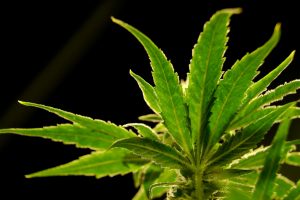
September was the driest and warmest on record in the Twin Cities
Last month was the warmest and driest September in the Twin Cities on record, according to the National Weather Service.
In Minneapolis-St. Paul, the average temperature for the month was 70.3 degrees — a whopping 6.6 degrees above normal and higher than the previous record high average temperature for September (69.1) that was notched last year.
With this month’s highs in the 80s and upper 70s, it marked a long month of well-above average temperatures, which are normally in the upper to mid-60s for the month.
Through Monday, the last day of September, the Twin Cities saw only 0.06 inches of precipitation for the month, beating the old record of 0.24 inches in 2022. Precipitation in September 2024 was more than 3 inches below normal in Minneapolis-St. Paul.
The dry spell followed an extraordinarily wet period just three months ago that ended long-running drought conditions. For instance, June 2024 was the fourth-wettest June and the fifth-wettest of any month on record in Minnesota.
But the latest U.S. Drought Monitor map shows that more than 80% of Minnesota is now considered abnormally dry, after the drought had disappeared in late summer.
About 15% of the state is in moderate drought. The driest areas are in the northeast, part of north-central Minnesota and the southwest corner of the state.
The unusually warm and dry weather led to a Red Flag Warning on Monday, alerting a very high fire danger across the state.
The fire risk is high and will remain high for the entire month of October, barring adequate precipitation, according to Brennan Dettman, a meteorologist with the NWS office in Chanhassen.
The continuing fire risk is caused by a trifecta of factors: a wet spring, a dry fall and high winds.
“The Red Flag Warning is a good thing to be aware of,” Dettman said Monday. “We had a wet spring and beginning of summer that allowed a lot of plants and vegetation to grow. Now having an ominously dry period so all of that is starting to dry out and could be potential fuel for fires to form. On days that are breezier, like today, it sets up an elevated fire risk condition with the dry weather and the vegetation being there as a fuel source — so if anything sparks, winds could allow it to be out of control.”
Dettman said that without any substantial precipitation predicted for October, the abundance of vegetation will remain dry enough to be fuel if a fire begins.
“There is no real sign of any kind of significant rain coming at least for the beginning of October and no big cool-downs,” he said.
Tuesday will kick off October with what might feel like a cooler high of 66, but which is actually average for October, because a cold front with gusty winds moved through Minnesota on Monday.
But Wednesday will see highs in the upper 70s again, Dettman said.
Related Articles
Supplies arrive by plane and by mule in North Carolina as Helene’s death toll tops 130
At least 64 dead and millions without power after Helene’s deadly march across the Southeast
Gear up for winter during St. Paul’s Snow Summit
Hurricane Helene kills at least 44 and cuts a swath of destruction across the Southeast
Helene makes landfall in northwestern Florida as a Category 4 hurricane

